Why the world’s most efficient cement plant needs to get a lot more sophisticated
By Ted C. Fishman
I’m standing about 275 feet above the banks of the mighty Mississippi, watching scores of black buzzards circle and soar and swoop around me. The birds and I are all drawn to the same 4,000-acre industrial site in Bloomsdale, Missouri, one of the largest cement plants in North America and the world’s most efficient: This vast, highly engineered complex—known as the Ste. Geneviève, built by Swiss cement giant Holcim—is manned by just a few dozen people, while some smaller and less-productive plants elsewhere in the world require more than a thousand employees to run.
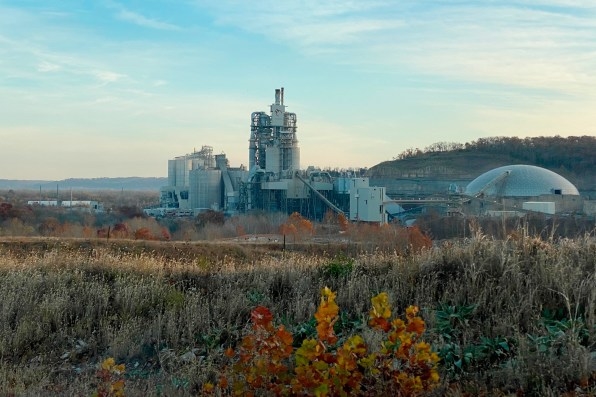
I’m standing with Thomas Newman, Holcim’s chief geologist in North America. He led the team that prospected the Ste. Geneviève site for the quality of limestone a new plant would require. Newman is stout and energetic and has an expert nose for limestone. He tells me he’s found more than a billion dollars’ worth of minerals for his employers. The quarry attached to this plant will yield rock for decades to come. Newman has brought me up the tower and notes that the buzzards love it up here, though he pays them scant attention. The birds are here because the plant is alive and breathing.
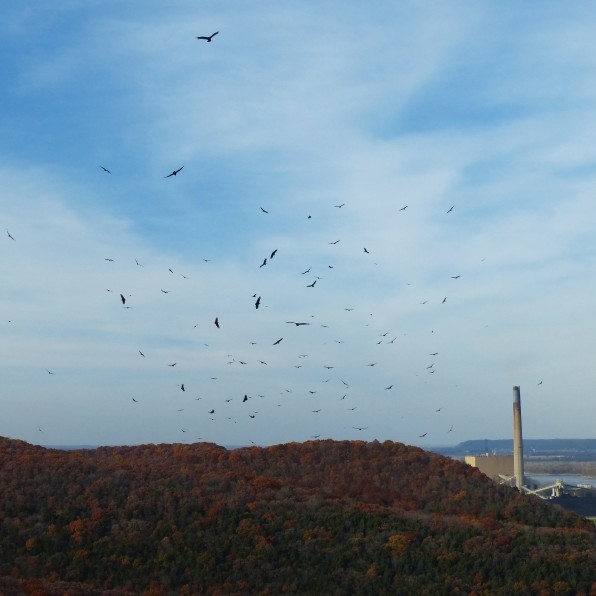
Everything about Holcim’s $1 billion Ste. Geneviève plant is supersize. There’s the vast stepped quarry that grows bigger daily, a cluster of gargantuan silos that rise above the tall cliffs and an 8-acre storage bin for chemical additives that go into the plant’s cement. The day I visit, it turns out roughly 4,000 tons of cement. It has the capacity to produce three times that, enough to generate 75,000 tons of concrete. One in five building projects in the U.S. use Ste. Geneviève cement, though its parent has 15 cement plants in the U.S. and 270 worldwide. Outside of China, Holcim is the world’s largest cement maker.
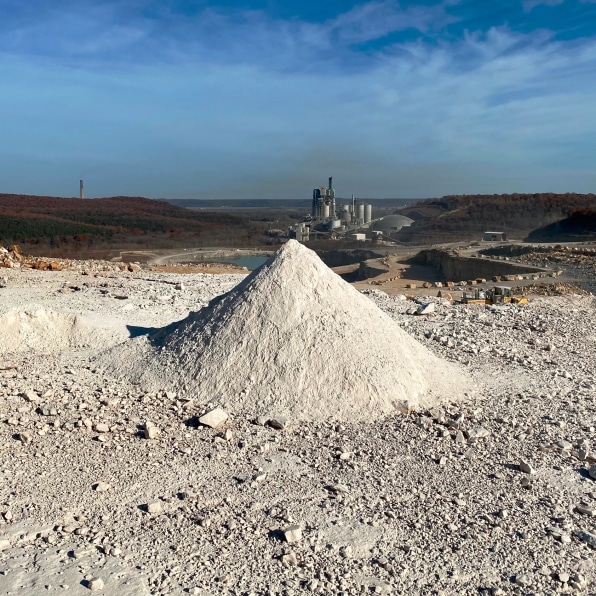
That’s a big deal, because concrete and cement make up about one-third of all the world’s man-made materials. Cement and concrete manufacturing together constitute the world’s second-largest source of atmospheric carbon. Per capita use of concrete has more than tripled over the last four decades, and one of our key strategies for dealing with the increasingly extreme weather that results from the climate crisis is to deploy yet more concrete—to protect islands and coastal areas from rising tides and shield villages from combustible woodlands.
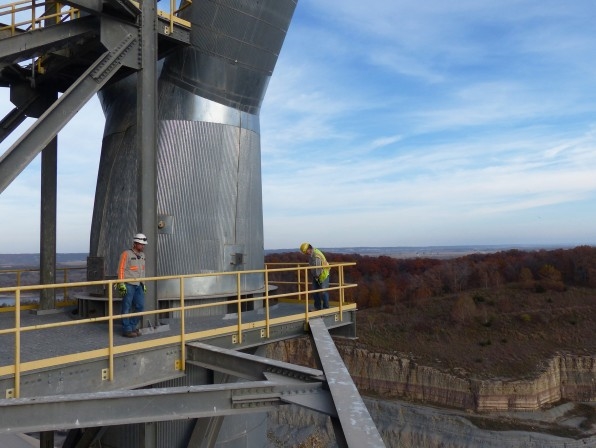
The tower we stand on is where crushed limestone is preheated before it makes its way into the world’s largest rotating kiln, a 100-yard-long spinning inferno heated to about 2600 degrees Fahrenheit. Cement making is the hottest and most energy-intensive manufacturing process of all, requiring hundreds of degrees more heat than the blast furnaces that smelt steel.
This preheater tower is the first place where heat drives carbon out of the stone to make clinker, the core ingredient in cement. The kiln finishes the job. The cement will eventually be mixed with rock sand and water to make concrete. The high heat is the magic wand that changes plain old stone into the “glue” that pulls concrete’s ingredients together. The plant’s super-heated ovens stir thermals overhead that also bounce off the hilly wooded banks along the river. I watch the buzzards glide above the trees to scavenge.
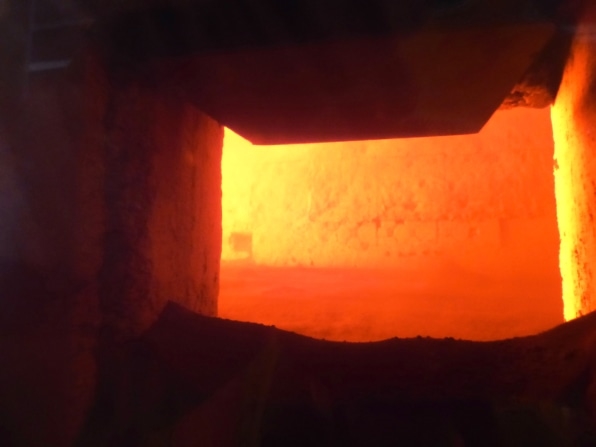
Like the birds, I am here to search. I’ve been fascinated by concrete since I was a kid and my architect father let me tag along with him on weekend inspections of Chicago-area job sites. Over time, concrete’s universal, literally all-encompassing place in modern life has gripped me. (This is the second part of a series of articles I’m writing on the subject for Fast Company.) Most of us take concrete for granted. We live and work in it, step on it, and drive on it without ever giving the substance a second thought. But our lives and futures depend on it, and I believe we must all be as aware of concrete as we are of water, air, power, food, art, and money.
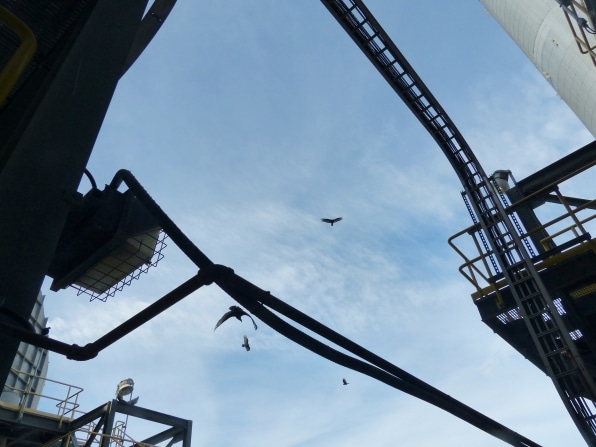
The materials industries and their publicly traded peers have come under the intense pressure from large portfolio investors to prove they are committed to lowering their impact on climate. In other words, fulfilling the criteria driven by the ESG (environmental, social, and governance) screens that are now applied to tens of trillions of dollars of capital in the hands of large investors, such as pension funds and institutional endowments.
Changes at Holcim are driven in large part by what’s happening in its Swiss home. There, activism from the public, and from the financial sector that sees climate change as a risk to global wealth, are changing the rules for cement and concrete. That’s ushering in a strategic shift at the company, which is betting on a new sustainable business model that promotes innovation and adds value to the company’s businesses. Holcim has committed to cutting its carbon emissions by 90% by 2050, with smaller goals along the way.
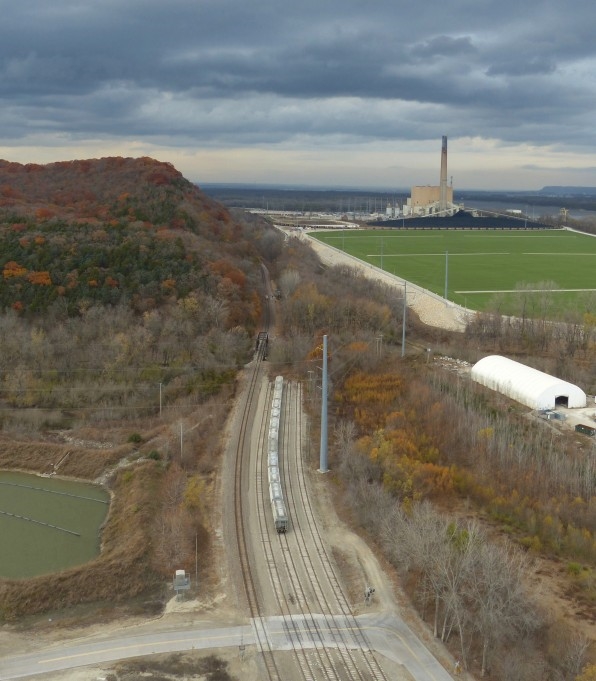
In other European countries and in the U.S., hundreds of firms old and new are working to innovate in the construction sector. Switzerland, however, has a nimble regulatory and political culture that can push innovation and environmental practices into the market faster than the United States. Swiss firms are investing heavily in innovators outside their country, porting over the model that Swiss pharmaceutical and food giants have long practiced.
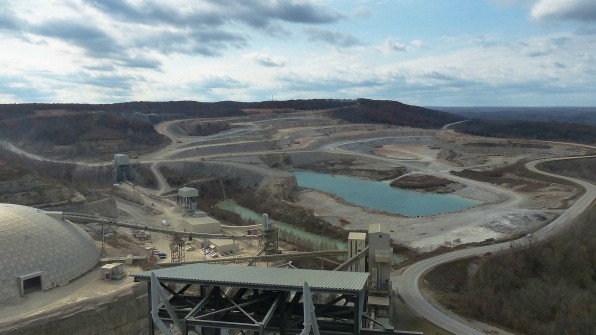
Perhaps even more consequential is how Swiss companies are pushing change in the U.S. When the recent Inflation Reduction Act was working its way through Congress, Holcim created a coalition with environmental organizations in the U.S. to lobby for features in the law that incentivize the use of greener construction materials. The Swiss company, which innovated in its home market, has a range of products that can flourish as the U.S. catches up with Switzerland in greener construction.
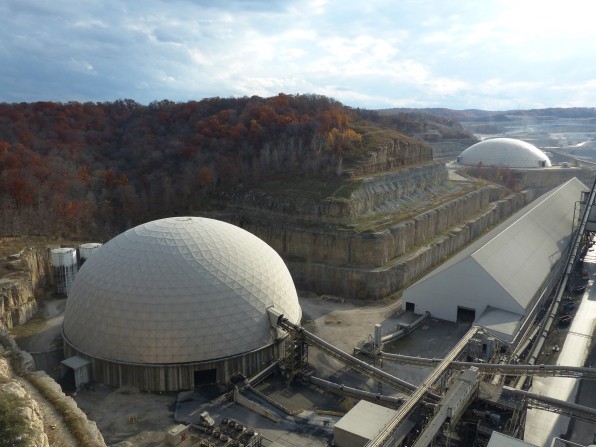
At Ste. Geneviève this year, Holcim is replacing its production of standard cement with a version that reduces carbon emissions by 10%. This plant alone will reduce its yearly carbon footprint by an amount equal to the annual emissions of 70,000 cars. That’s a lot, but there’s still a long way to go: Though the St. Geneviève is America’s most energy-efficient cement plant, its scale still makes it the most prolific emitter of carbon among all such plants in the U.S.
As I leave the Ste. Geneviève plant, I glance up again at the buzzards. Their presence this far north on the Mississippi is a further warning to cement’s environmental impact, the species following a warm season that’s lengthened due to climate change. The next stop on my concrete tour will be Switzerland, the global center of concrete innovation. Buzzards there may be scarce, but I’ve heard the swan fights in Lake Zurich can be bloodcurdling.
A former trader and member of the Chicago Mercantile Exchange, Ted C. Fishman is the author of China, Inc. and Shock of Gray. His writing has appeared in The New York Times Magazine, Harper’s, Esquire, and many other publications. He is working on a book about concrete for W.W. Norton.
(26)



